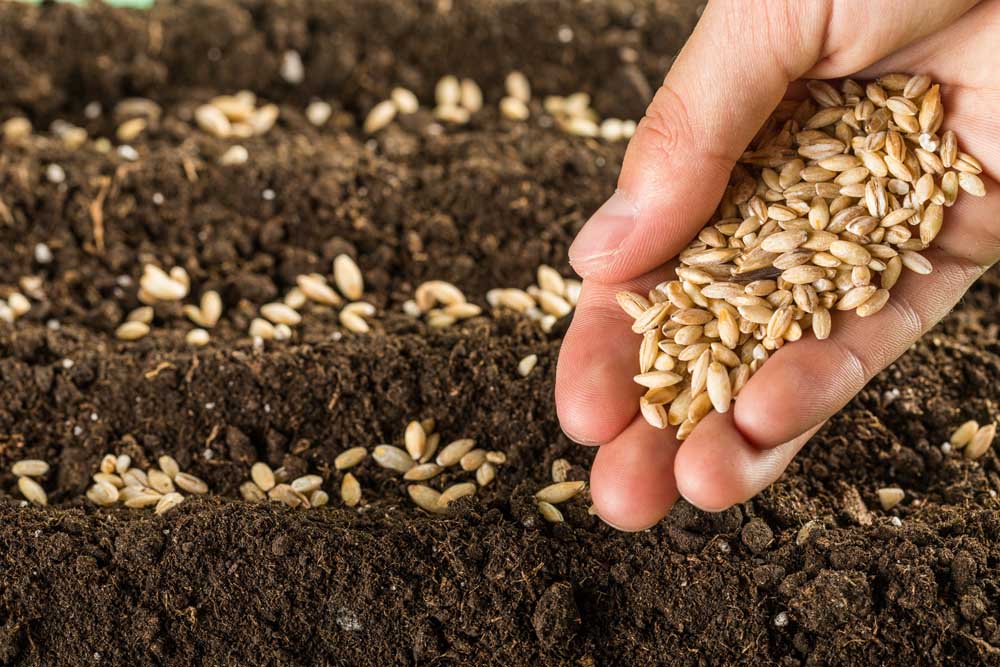Garden corner: Take soil’s temperature prior to planting
Published 1:30 am Sunday, May 1, 2022

- Some seeds need direct sunlight to germinate.
Children chant, “Are we there yet?” Gardeners chant, “Can I plant yet?” Impatience has no age boundaries.
Gardeners not familiar with the weather/garden cycles in Central Oregon, must think we are trying to keep a deep dark secret when seasoned gardeners don’t offer a definitive answer. Long-time residents who haven’t gardened in the area also find it confusing.
The best advice I can give is to buy a soil thermometer available at local nurseries and garden centers. Ideally the soil temperature should be taken at approximately the same time usually between 9-11 a.m. every day for l week. The thermometer should be inserted into the soil to a depth of 3-4 inches for seeds, deeper if you are transplanting materials that have established root systems. This charting will give you a good idea of the stability of the warmth of the soil.
Not everyone has the daily flexibility to establish that type of routine. Please don’t let that deter you from planting vegetables for your family. Use your good sense. Early in the spring, usually in March, we get that false sense of security that spring is here. Temperatures soar and it feel so good, then the temperatures plummet and we are back to reality.
A classic example of trying to get ahead of the game is carrots. At a soil temperature of 41 degrees and a seed depth of ½ inch, carrot seeds will take 51 days to germinate. At a soil temperature of 50 degrees the germination time will be approximately 17 days. Lettuce will germinate in 15 days at a soil temperature of 41 degrees. If you wait until the soil reaches 50 degrees, it will take approximately 7 days.
Knowing the soil temperature is more critical to planting than following a traditional date on the calendar. I often think of the area where I grew up, mid-Wisconsin, and the traditional date for planting sweet peas was Good Friday. No matter what the weather was or the month, Good Friday was the day. The neighbor lady would chide my mom for not getting that planting done on the proper day. Her ending comment was always to the effect it was no wonder mom’s sweet peas weren’t as lush as hers. The criticism didn’t faze my mom, she never changed her schedule to conform. And we always had beautiful bouquets of sweet peas.
Choosing seeds for Central Oregon requires a little math. Select varieties with a maturity date of 65-75 days. Then add 14 days to compensate for the swing of warm days and cool nights. That will give you a more realistic maturity date. The goal is to keep the maturity date to 90 days or under.
The day before planting your seeds, it is important that you irrigate the planting area. Seeds need to go into moist soil. After planting on the following day, irrigate lightly to settle the seeds.
Think ahead and plan for the unexpected frost we hear about on the 5 p.m. local weather report. It is a little late in the day to think about how you will protect the seedlings from frost. The worst frost protection would be a covering of plastic unless it is over a framework and will not come in direct contact with the seedlings. Season extenders will do double duty in protecting seedlings at the beginning of the season and help to extend the production and harvest in the fall.
Several ideas include low hoop tunnels made with PVC pipe, cloches, cold frames, Wall O’ Water and row cover. For construction ideas, check out the community gardens at Discovery Park in Northwest Crossing and the Hollinshead Community Garden, part of the Hollinshead Park in northeast Bend.
Everything you need to know about the seeds you are going to start is on the seed packet. Too often the info most ignored is the planting depth. A valuable hint is that the eraser on a new pencil is ¼ inch, a planting depth of many seeds. A quick planting method would be to use a tape or ruler to mark the distance between seeds and use the pencil eraser to measure the depth.
Some seeds require light to germinate. After two years of trying to grow strawflowers, I read the seed packet and took the information seriously. Light is required for germination. When I followed directions and did not cover with soil I had wonderful germination.
For more information: Growing Vegetables in Central Oregon, an Oregon State University publication available at the Deschutes County OSU Extension Office in Redmond or on-line Growing Vegetables in Central Oregon(EM 9128) www.catalog.extension.oregonstate.edu/9128
“Knowing the soil temperature is more critical to planting than following a traditional date on the calendar.”








